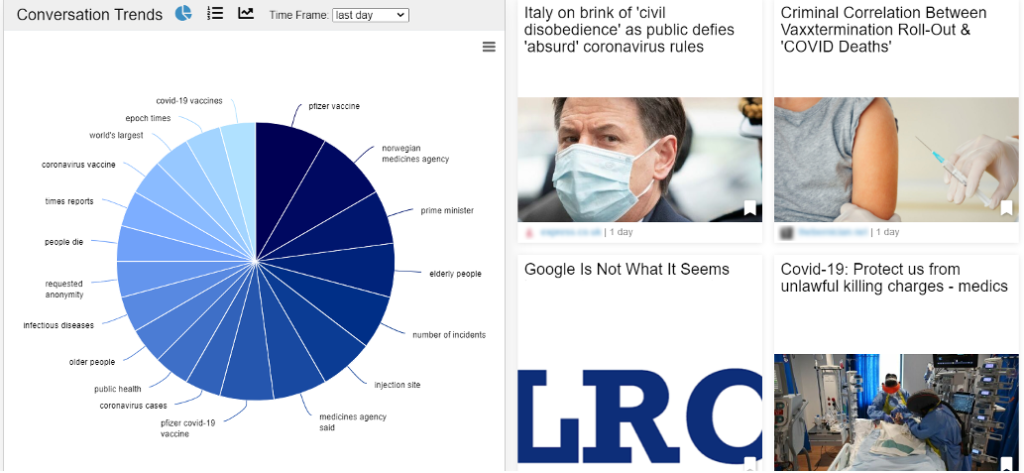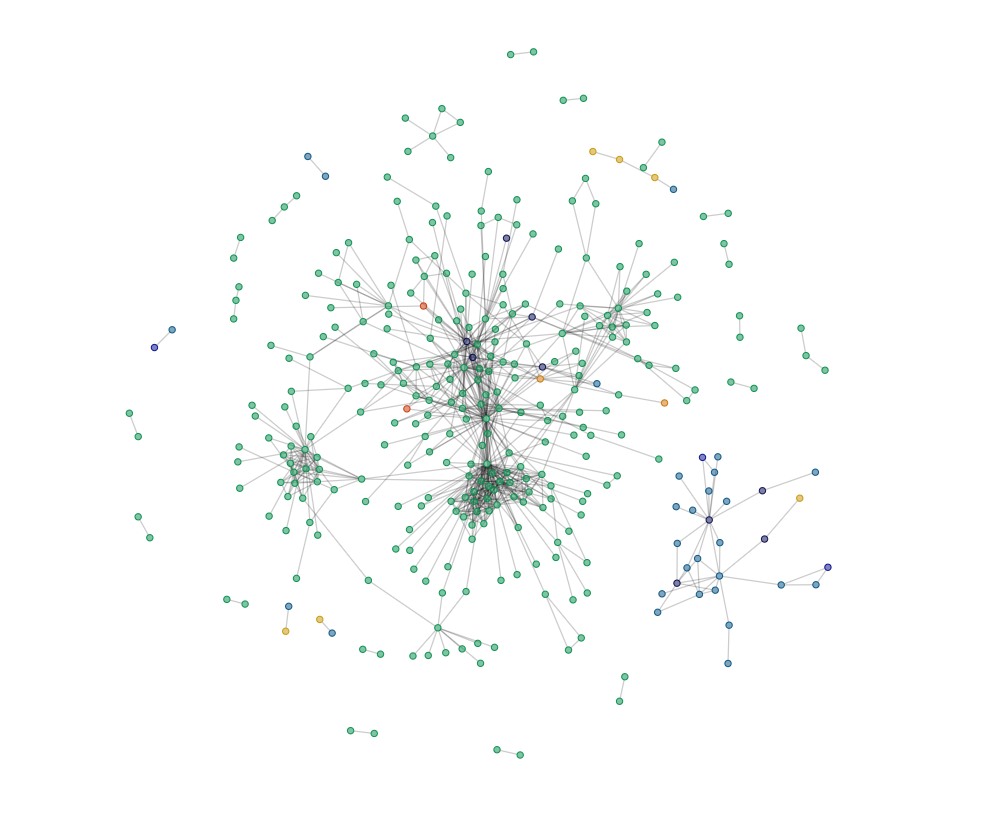Introduction
In the twenty first century, for many of us the internet has become an essential part of our daily lives. It allows us to connect to others, regardless of the distance, and enables us to communicate and share content. The internet can even act as a virtual marketplace, allowing millions to buy, sell, and conduct their businesses without even leaving their homes. However, just as there are those that use the internet to enrich their lives, there are also those that exploit it to harm others. And often times the most dangerous of these criminals, are the most subtle.
In regards to cyber security, the easiest weakness in security to exploit is often the human behind the computer. Clickbaits are used to attract at attention of a web user, where upon clicking on the link the user is tricked and taken to a site considerably below their expectations, or tricked into giving away sensitive information. Clickbaits are links or articles that tempt people to click on it by appealing to their curiosity, only to take the user to another site that is either trying to make money off of your site visit, trick the user to giving away personal information, or influence the user’s beliefs on a topic. With many of these sites, if you are not buying their product, your visit or information is the product. While many of these types of clickbait scams do pose threats to individuals browsing the internet, they also damage the larger community because of how they are spread on social media.
With the rise of fake news we have seen how institutions, and whole ideologies can be drawn into question because of something someone saw on the internet. Although it has a primarily political connotation after the 2016 US presidential election, fake news can be defined as any fabricated information that mimics media content in form, but not in organizational process or intent. And while it has a primarily political context, fake news also is also being disseminated about topics such as nutrition, vaccination, and finances . Making it all the more dangerous, fake news can spread extremely easily on social media sites like Twitter or Facebook. Facebook insights show that even after the US elections, fake news remains a problem with roughly 60 Million engagements per month on fake news articles . An additional study found that on Twitter, fake news can be spread far more rapidly, and by far more people than genuine news does . While the size and scope of fake news and clickbaits has become apparent, its causes and treatments have yet to be found.
While both Facebook and Twitter are aware of their fake news and clickbait problems, their attempts at mitigating them have not exactly been successful. Even after multiple algorithm changes to Facebook in early 2018, many articles that have been reported as false by major fact-checking organizations had not been flagged as such, and major fake news sites had seen little or no decline in Facebook engagements. Furthermore, Facebook’s now-discontinued strategy of flagging stories as “Disputed” seemed to have backfired, as some data suggests that fake news that was not flagged, came across as far more reputable because Facebook had not flagged it. It seemed that fake news and clickbait outlets remained one step ahead of Facebook’s ability to suppress it, with many media commentators fearing that misinformation overall is “becoming unstoppable” . And you don’t have to be a politician or celebrity to find yourself the victim of one of these cyber attacks.
Misinformation scams, coming in the form of clickbait or fake news articles afflict a wider range of people and industries than most originally think. Malicious actions (as opposed to accidental or unintentional) by internet agents seeking to gain financial information, medical information, or personally identifiable identification make up nearly 60% of all cyber crime incidents . Furthermore of those who have attempted to take legal actions, over 50% continue to be private civil actions brought to courts, with only 17% of those being criminal actions . Due to the novelty of cyber crimes, it is likely that these perpetrators will face their day in trial. And when examining the demographics of these incidents, certain conclusions can be made about the industries that face the greatest risk. A certain study found that retail, information, manufacturing, and finance and insurance industries consistently pose the greatest risk of cyber incidents . Due to the nature and scale of their businesses, these industries face significant threats from coordinated misinformation attacks, clickbaiting or phishing scams.
The presence of fake news and clickbait scams have grown over the years with a variety of motivations. Some seek to spread misinformation over topics such as politics, nutrition, and finances, while others seek to extort sensitive information from the web browsers. And although there has been a marked rise in malicious or misleading content on social media, efforts to stop their spread by the site hosts have been far from successful. Therefore it is up to the individual to mitigate the damages of malicious internet content in their daily lives. With education, and the proper tools to analyze the composition and circulation of fake news articles and clickbaits , one is far more empowered to navigate the pitfalls of the internet.
Understanding and Analyzing with Kudzu
Although the problem of clickbaits and misinformation remains persistent on the internet, we are not without tools to aid and assist us in understanding and combating these schemes. With EdgeTheory’s wide range of tools and data collection services, a greater understanding of the trends and methods these internet scammers use.
Using a system of sweeping the internet periodically for content, EdgeTheory’s Kudzu program offers a user the ability to analyze media article shares and trends over time. By regularly taking in media content, such as tweets, YouTube videos, news articles, RSS feeds, etc and analyzing key words used, a time series dataset of the information can be produced and analyzed. For example in figure 1, information about a potentially misleading article about the COVID vaccine and its amplifiers has been aggregated.
Furthermore, because of the periodic sweeping and aggregation of the data, an analysis of the shares with respect to time is also available, as well as a closer look into who is sharing these articles. Figure 2 beneath depicts a timeline of shares from the same article in figure 1 above. In addition to that, it is possible to list the times and find those amplifying a certain article.

Figure1, a data table about an article found circulating the internet

Figure 2, a timeline of shares of the misleading article from figure 1
In addition to being able to track media articles being shared, Kudzu is also capable of collecting information from the ones sharing these articles. In figure 3, information on one of the amplifiers of the news article from figure 1 is displayed. Information on what else they are sharing, as well as the overall makeup of their media shares can be observed. Additionally, while this is just one breakdown of a single amplifier, breakdowns are available for all amplifiers of an article.

Figure 3 displays information on an individual actor who amplified the article in figure 1
Additionally, Kudzu has the ability to map how certain amplifiers and internet interact. Figure 4 below depicts how co-amplifiers of certain articles are interrelated.

Figure 4, a map of interrelated co-amplifiers of media articles. Figure 4 is unrelated to the example in figures 1-3
Using this vast collection of data from media content, EdgeTheory’s Kudzu program also offers a dashboard-like tool capable of displaying overall media trends as well as forecasting upcoming trends. Figure 5 below displays the dashboard of a certain date in January 2021. This dashboard displays a running list of currently popular trends, as well as trends that are rapidly declining in popularity. The volume of these articles, as well as leading publisher of the trending articles can be found using the “Trend Volume” tool depicted on the dashboard in figure 5. This offers additional information on the makeup of conversations being had and media being shared. This feature is depicted in figure 6 below.

Figure 5, a dashboard of media trends from January 19, 2021

Figure 6, a table of media trends from 19 January 2021
In summation, EdgeTheory provides tools to track and analyze internet media and conversation trends. By continually consuming and analyzing keywords across a variety of media platforms (Facebook, Twitter, YouTube, RSS feeds, websites, etc), Kudzu is able to track and display what articles are being shared, and who is sharing them. At a micro level, Kudzu can track the dissemination of malicious media and clickbaits. While, at a macro level, Kudzu can track and compare trends in article subjects, composition, and amplifying agents. Additionally, all information and graphs can be exported in a variety of formats, such as .xlsx, .csv, . jpg and .png files for individual use.
Conclusion
As integral as the internet has grown to our daily lives, it is paramount that we understand the dangers lurking beneath the surface of the web. With the rise of clickbaits and fake news that has spread across social media, one has to be extremely careful where they click. These threats are disguised as media links that will try to trick the user into entering the site, only to try and monetize their visit, steal their information, or download malware on their device. And following the 2016 U.S. presidential election, fake news has taken on a far more political connotation.
In the runup to the 2016 presidential election, fake news was widely talked about, and the integrity of many information and news outlets were questioned. Even after the election, fake news articles on topics ranging from finance, to nutrition and vaccination have continued to multiply across social media. And despite their best efforts, social media moderators have been powerless to stop the flow of fake news and clickbait links.
Therefore it is necessary to empower individuals with the tools to study and analyze these threats so that we may combat them. By continually consuming and breaking down media content, EdgeTheory’s Kudzu program can track media trends across a variety of different platforms. Kudzu offers straightforward data reports at both a micro and macro level that can be easily exported for individuals as well.
Works Cited:
Aldwairi, Monther. “Detecting Fake News In Social Media Networks.” The 9th International Conference on Emerging Ubiquitous Systems and Pervasive Networks, vol. 2018, 2018.
Allcott, Hunt. “Trends in the Diffusion of Misinformation on Social Media.” Research and Politics, Apr. 2019, journals.sagepub.com/doi/suppl/10.1177/2053168019848554.
Lazer, David MJ. “The Science of Fake News.” Science Magazine, vol. 359, no. 6380, 9 Mar. 2018, pp. 1094–1096., doi:https://science.sciencemag.org/.
Romanosky, Sasha.” Examining the costs and causes of cyber incidents”, Journal of Cybersecurity, Volume 2, Issue 2, December 2016, Pages 121–135, https://doi.org/10.1093/cybsec/tyw001





